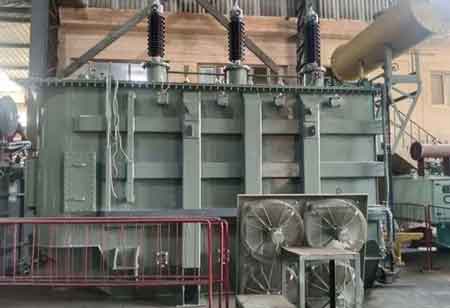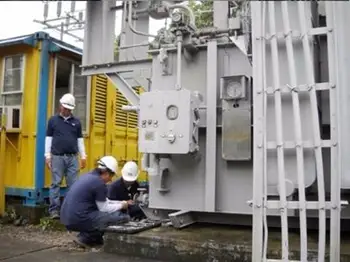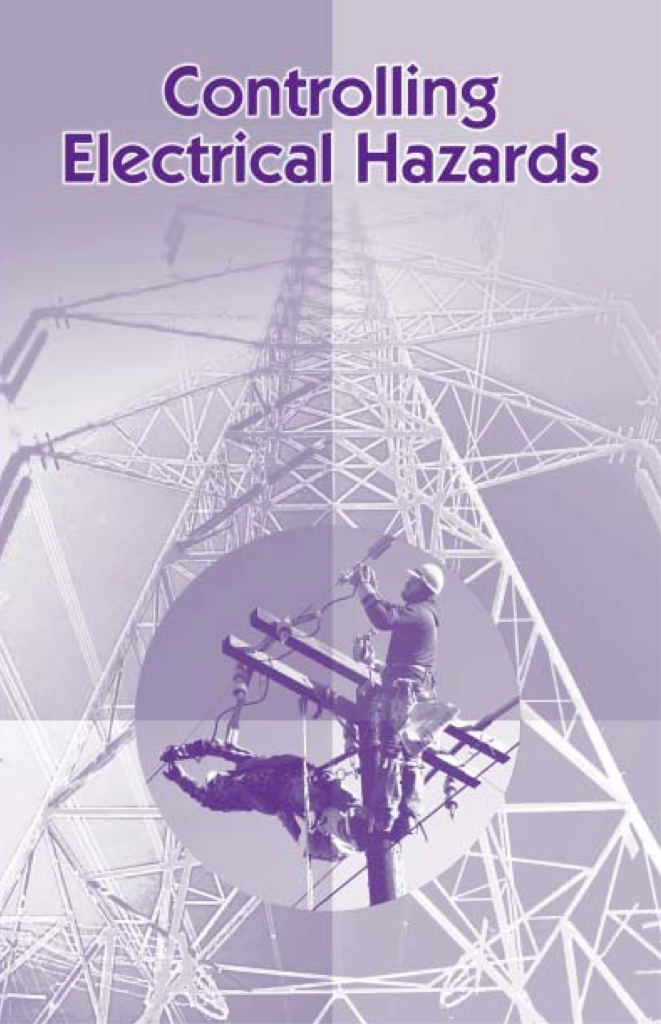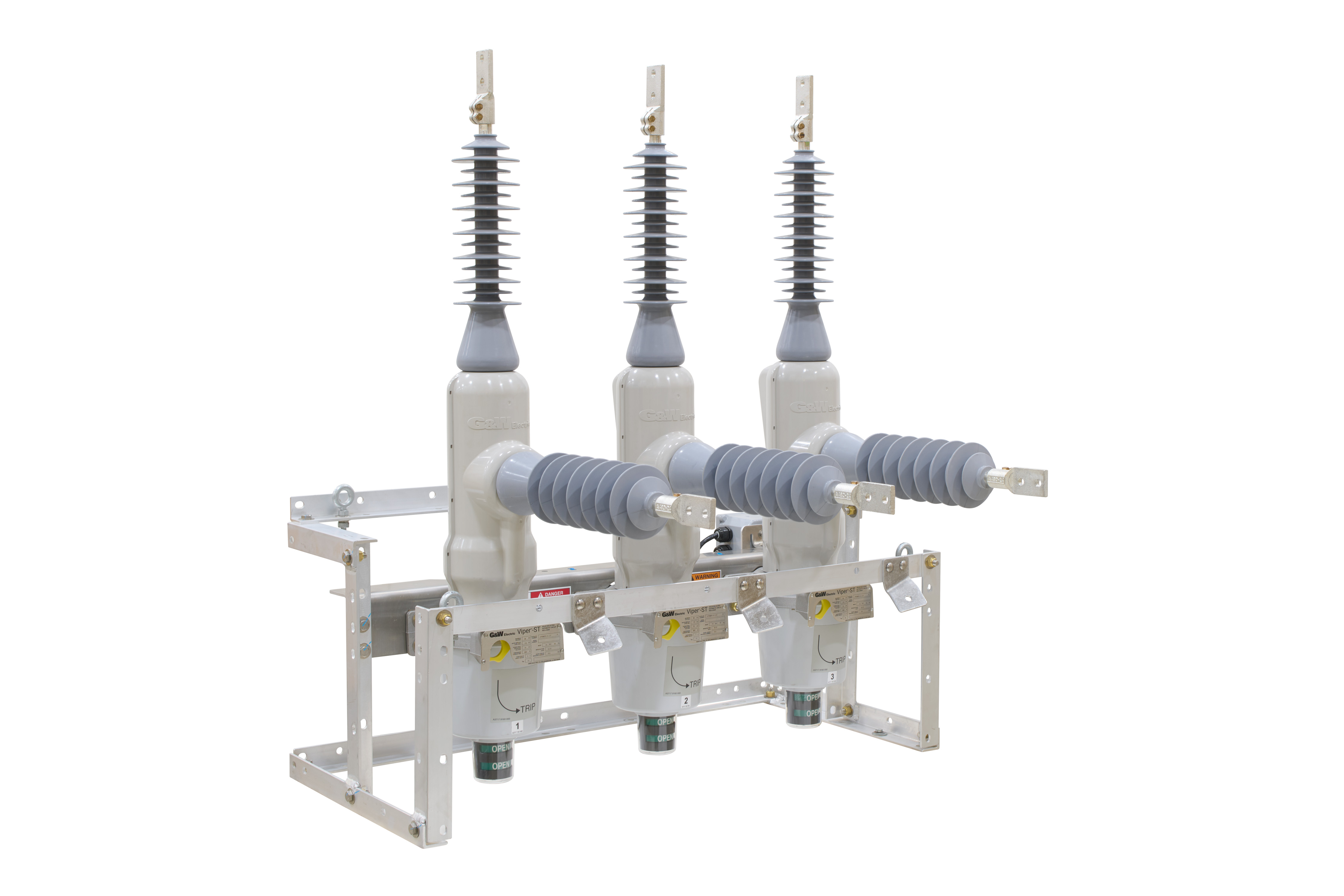Power Transformer Asset Management Using Health Index

Power Transformer Maintenance Training
Our customized live online or in‑person group training can be delivered to your staff at your location.

- Live Online
- 12 hours Instructor-led
- Group Training Available
Download Our OSHA 3075 Fact Sheet – Understanding Electrical Hazards in the Workplace

- Learn the effects of electric current on the human body
- Understand OSHA safety standards and protective devices
- Discover essential lockout/tagout and grounding practices
Power Transformer Asset Management Using Health Index aligns condition monitoring, risk assessment, and predictive maintenance to prioritize assets, optimize lifecycle strategies, reduce failure risk, and support data-driven planning with DGA, analytics, and reliability scoring.
What Is Power Transformer Asset Management Using Health Index?
Scores transformer health to enable risk-based maintenance, lifecycle planning, and improved reliability.
✅ Aggregates DGA, oil tests, load, age, and failures into one score
✅ Prioritizes capex/opex using risk and consequence modeling
✅ Optimizes maintenance, spares, and replacement timing
Power transformer asset management using health index is a critical practice for electrical engineering and maintenance professionals aiming to maximize operational efficiency, reduce downtime, and extend equipment lifespan. This approach provides a systematic, data-driven method to assess the condition and reliability in real time. Engineers can detect potential issues before they escalate into costly failures by leveraging advanced diagnostics, predictive maintenance, and condition monitoring tools. Effective asset management ensures optimal performance, supports energy reliability, and minimizes unplanned outages, making it an essential strategy for utility companies, industrial facilities, and grid operators responsible for maintaining a stable and resilient power infrastructure.
Electrical Transformer Maintenance Training
Substation Maintenance Training
Request a Free Training Quotation
The energy sector's reliance on electrical distribution underscores the need for effective asset management strategies. As power grids age and operational demands increase, ensuring optimal performance of these critical assets has become a priority for utilities and energy providers. One of the most advanced approaches in transformer asset management is the use of a health index, a data-driven metric that evaluates the condition and informs decision-making processes. This method not only enhances reliability but also reduces costs, making it a crucial element of modern asset management frameworks. For utilities establishing consistent scoring methods, resources such as evaluation methodologies for transformers provide practical criteria that align well with health index frameworks.
FREE EF Electrical Training Catalog
Download our FREE Electrical Training Catalog and explore a full range of expert-led electrical training courses.

- Live online and in-person courses available
- Real-time instruction with Q&A from industry experts
- Flexible scheduling for your convenience
Predictive Maintenance: Moving Beyond Time-Based Schedules
Predictive maintenance has emerged as one of the key benefits of utilizing a health index for power transformer management. By proactively identifying potential issues, operators can avoid unplanned outages and costly emergency repairs. Traditional maintenance approaches, which rely on fixed schedules, often lead to over-maintenance or missed issues that result in failures. However, with predictive maintenance driven by health index data, utilities can schedule targeted interventions at the optimal time. This approach has proven to be a cost-effective strategy, as it extends the operational life of equipment while minimizing downtime. Case studies from leading utilities reveal substantial returns on investment when predictive maintenance programs are implemented. Planning work during optimal outage windows is easier when teams consult maintenance and inspection window guidance that contextualizes risk and system loading.
Data Analytics and AI: Unlocking the Power of Data
A pivotal factor in advancing predictive maintenance is the integration of data analytics and artificial intelligence (AI) into health index calculations. AI-driven algorithms process vast amounts of operational data, identifying patterns and anomalies that signal potential failures. Machine learning models continue to evolve, enabling utilities to predict when and where faults may occur. By leveraging these insights, energy providers can shift from reactive to proactive maintenance models. Furthermore, AI enhances the transparency and accuracy of health index assessments, making the entire asset management process more reliable. As AI becomes more sophisticated, its role in transformer health management will continue to expand, driving efficiency and cost savings. Effective models depend on disciplined variable selection, and studies on feature selection for health index diagnoses illustrate how to boost accuracy and interpretability.
Condition Monitoring Technologies: Gathering Essential Data
The success of a health index system depends on accurate and comprehensive condition monitoring technologies. These technologies collect real-time data on the health and performance of equipment, feeding the health index with critical insights. Dissolved gas analysis (DGA) is one of the most widely used monitoring techniques, providing early warning signs of potential faults. Other technologies, such as partial discharge (PD) monitoring and infrared thermography, also contribute to a holistic view of transformer health. The rise of Internet of Things (IoT) devices has further revolutionized data collection. IoT-enabled sensors continuously stream performance metrics, enabling 24/7 monitoring. These advances in monitoring technology ensure that health indices are based on up-to-date, real-world conditions, leading to more accurate maintenance and repair decisions. Since oil chemistry often dominates condition trends, references on transformer insulating oil testing and treatment help translate laboratory results into actionable maintenance.
Modern utilities are also standardizing telemetry and dashboards through condition monitoring modernization practices to scale analytics across fleets.
Risk Assessment and Management
Effective risk assessment and management are at the core of power transformer asset management using health index. A health index allows asset managers to quantify the risk of failure, taking into account the criticality of each asset within the grid. This information helps prioritize maintenance activities based on risk, ensuring that the most vulnerable units receive attention first. Risk assessment frameworks, informed by health index data, provide utilities with the ability to allocate resources more efficiently. By focusing on high-risk assets, operators can prevent failures that could have severe operational and financial consequences. The integration of health index data into risk management strategies promotes a holistic approach to asset management, balancing cost, reliability, and safety.
Industry Standards and Best Practices
Industry standards and best practices play a significant role in ensuring the consistent application of health indices for power transformer asset management. Regulatory bodies and industry associations have developed guidelines to standardize how health indices are calculated and interpreted. Adhering to these standards ensures uniformity in asset evaluation, facilitating comparisons across different utilities. The importance of best practices extends beyond technical calculations. It also encompasses cultural shifts within organizations, where continuous improvement and adherence to best practices are seen as essential components of asset management. Organizations that cultivate a culture of excellence in transformer health management are better positioned to maintain grid reliability and ensure compliance with regulatory standards.
Frequently Asked Questions
What is the health index of power transformers?
The health index is a comprehensive assessment of its overall condition and operational reliability. It is typically expressed as a numerical score or rating that represents the transformer's likelihood of failure or its remaining useful life. The health index is derived from various diagnostic tests, inspections, and operational data. Key parameters used to calculate the health index include insulation condition, dissolved gas analysis (DGA), moisture content, oil quality, partial discharge levels, and thermal performance. This index helps asset managers prioritize maintenance, plan replacements, and reduce the risk of sudden transformer failures.
Sign Up for Electricity Forum’s Utility Transformers Newsletter
Stay informed with our FREE Utility Transformers Newsletter — get the latest news, breakthrough technologies, and expert insights, delivered straight to your inbox.
How to check transformer health?
Checking the health involves a series of tests, inspections, and monitoring processes. Some of the most effective methods to assess transformer health are: For a practical overview, a concise power transformer health check guide outlines typical steps and thresholds.
Dissolved Gas Analysis (DGA):
- Identifies gases dissolved in the insulating oil, which indicate potential faults such as overheating, arcing, or partial discharges.
Insulation Resistance Test:
- Measures the resistance of the insulation to ensure it can withstand electrical stress without breakdown.
Dielectric Breakdown Voltage Test:
- Tests the oil's ability to withstand high voltage without breaking down, providing insights into oil quality.
Furan Analysis:
- Identifies degradation of cellulose-based insulation, helping to estimate the remaining life of the paper insulation.
Moisture Content Analysis:
- Measures water content in the oil and insulation, which can significantly impact the performance and longevity.
Partial Discharge Testing:
- Detects small electrical discharges within the insulation, which could indicate developing faults.
Thermal Imaging (Infrared Scanning):
- Identifies hot spots, which can be signs of loose connections, overloads, or failing components.
Tap Changer Analysis:
- Assesses the condition of the tap changer, which is a key component responsible for voltage regulation.
Winding Resistance Test:
- Checks for abnormalities in the winding, such as open circuits or high resistance, which could indicate damaged coils.
Bushing Test:
- Inspects bushings for cracks, partial discharge activity, or moisture ingress, all of which can compromise the transformer’s health.
- Routine monitoring, online condition assessment systems, and predictive maintenance schedules can ensure timely identification of issues and prevent failures.
How long should a transformer last?
The lifespan depends on several factors, including design, materials, operational conditions, and maintenance practices. In general, power transformers have an expected lifespan of 25 to 40 years, but with proper maintenance and monitoring, they can last 50 years or more. Key factors that affect transformer longevity include:
Operating Environment:
Harsh environments with high humidity, pollution, or extreme temperatures can shorten life.
Load Conditions:
- Operating a transformer at or above its rated capacity for extended periods accelerates insulation aging and degrades internal components.
Maintenance and Testing:
- Regular testing, oil analysis, and preventive maintenance can significantly extend the life.
Insulation Aging:
- Over time, insulation materials degrade, especially under high temperatures and moisture conditions.
Design and Manufacturing Quality:
- High-quality designs and materials result in longer-lasting transformers, while poor manufacturing practices may result in premature failure.
When planning replacements, reviewing transformer design considerations can ensure new units align with expected loading, environment, and maintainability.
By actively monitoring health indices and conducting routine maintenance, operators can maximize the lifespan and reduce the likelihood of unexpected failures.
The use of health indices in power transformer asset management represents a paradigm shift in how utilities approach maintenance, risk assessment, and overall system reliability. By leveraging predictive maintenance, AI, condition monitoring, risk management, and industry best practices, utilities can optimize the performance. This approach not only reduces operational costs but also enhances the reliability and safety of the electrical grid. As new technologies continue to evolve, the role of health indices in asset management will only grow in importance, shaping the future of the energy sector in profound ways.











